Winter is just around the corner, and it’s time to prepare your home and HVAC system for the chilly months ahead. Your heating, ventilation, and air conditioning (HVAC) system is a vital component of your home, keeping you warm and cozy during the winter season. To ensure it functions efficiently and effectively throughout the winter, proper winterization is crucial. In this article, we’ll guide you through the essential steps to winterize your HVAC system and protect both your furnace and home.
Understanding the Importance of Winterization
Winterization is the process of preparing your HVAC system for cold weather. It involves various tasks that help your system run efficiently, reduce energy consumption, and extend its lifespan. Proper winterization also prevents costly breakdowns and ensures your home stays warm when you need it most.
Gather the Necessary Tools and Materials
Before you begin, make sure you have all the tools and materials you need. This includes replacement air filters, weatherstripping, insulation, and any required HVAC maintenance supplies.
Change or Clean Your Air Filters
Dirty air filters can obstruct airflow, causing your furnace to work harder and less efficiently. Replace or clean your air filters regularly to ensure proper airflow and indoor air quality.
Inspect and Seal Ductwork
Inspect your ductwork for leaks and seal them using duct sealant or professional-grade foil tape. Leaky ducts can lead to heat loss and decreased efficiency.
Check and Clean Vents and Registers
Remove any obstructions from your vents and registers to ensure even heating throughout your home. Vacuum them to remove dust and debris.
Schedule a Professional HVAC Inspection
Consider hiring a professional HVAC technician for a thorough inspection. They can identify and address any issues that may affect your system’s performance. They can also assist with winterizing your HVAC system!
Program Your Thermostat
Install a programmable thermostat if you don’t already have one. Programming it to lower the temperature when you’re away or sleeping can significantly reduce energy consumption.
Check for Drafts and Insulate
Inspect your doors and windows for drafts. Use weatherstripping and caulk to seal gaps, and consider adding additional insulation in your attic and walls for improved energy efficiency.
Protect Your Outdoor Unit
If you have an outdoor HVAC unit, cover it with a waterproof cover to shield it from snow, ice, and debris. Ensure the cover doesn’t completely seal the unit, allowing for ventilation.
Clear Snow and Ice
Regularly remove snow and ice buildup around your outdoor unit to prevent damage and maintain proper airflow.
Monitor Your System Regularly
Throughout the winter, keep an eye on your HVAC system. Listen for unusual noises, check for any warning signs like unusual odors or reduced heating, and address issues promptly.
Emergency Preparedness
In case of a winter storm or power outage, have a plan in place. Consider investing in a backup generator to keep your HVAC system running during emergencies.
The Benefits of Winterizing
Properly winterizing your HVAC system offers numerous benefits, including lower energy bills, extended equipment lifespan, improved indoor air quality, and increased comfort in your home.
Common Winter HVAC Problems
Be aware of common winter HVAC issues such as frozen pipes, furnace breakdowns, and carbon monoxide leaks. Knowing how to recognize and address these problems can save you time, money, and discomfort.
Conclusion
Winterizing your HVAC system is a proactive step towards a cozy and energy-efficient winter season. By following these guidelines and investing in regular maintenance, you can ensure your furnace and home stay warm and comfortable throughout the cold months.
